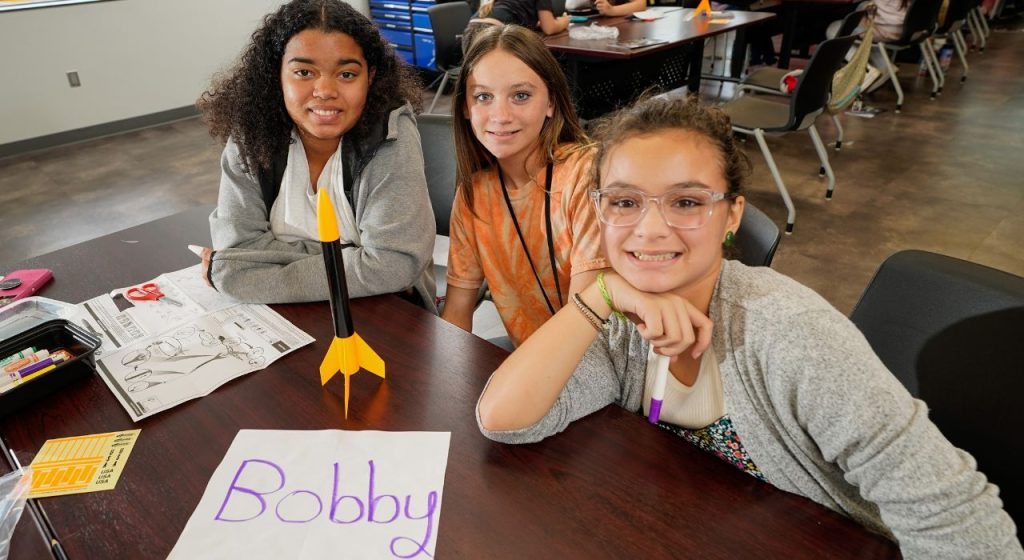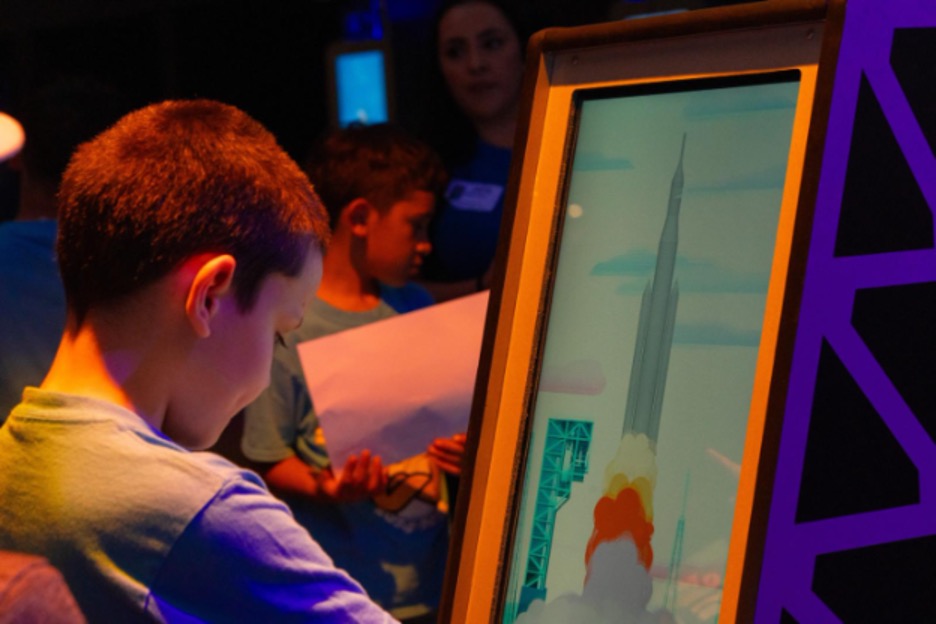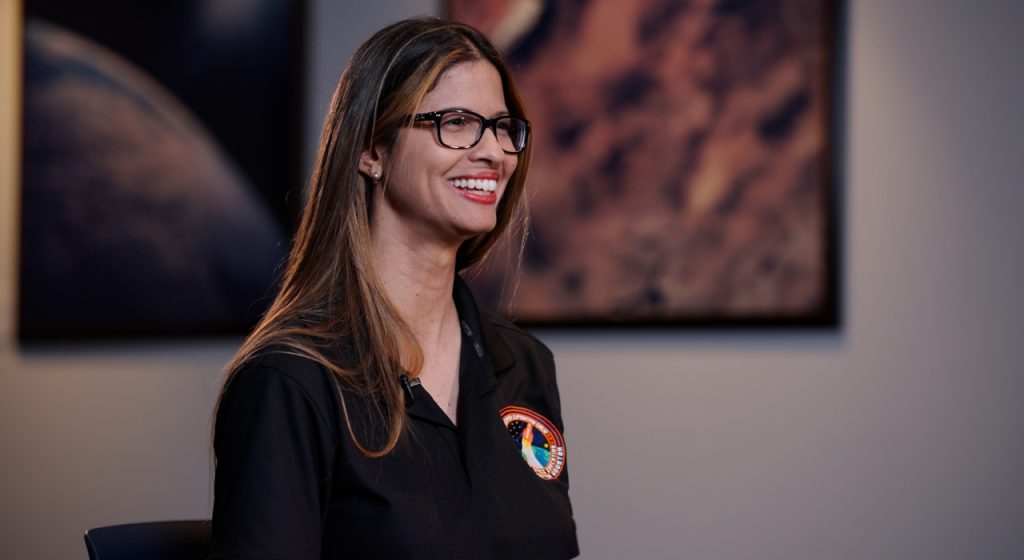Have you heard? There’s a new and exciting test article on display at the center!
Suspended in space, just above our Mission Mars exhibit, is the Morpheus prototype planetary lander, used for testing vertical takeoff and landing for future deep space missions.
This autonomous robotic lander has actually been used in testing at NASA Johnson Space Center (JSC) and NASA Kennedy Space Center (KSC), to bring advanced spacecraft technologies from the lab into an integrated flight system and aid in NASA’s mission of extending human presence across the solar system.

NASA’s Morpheus Project serves as part of the technological foundation required to take human presence the last miles onto the surface of the moon, Mars or other planets and start them on their way home again.

The vehicle was designed as a test bed for advanced spacecraft technologies, to transform these assets into future human exploration mission capabilities.
Its most important features can potentially simplify future space missions, lowering costs and optimizing safety for trips to the moon, Mars, and beyond.
How does the Morpheus vehicle do this? Two ways.
First, Morpheus reduces mission-associated costs by simplifying the mission using its primary payload, the Autonomous Landing and Hazard Avoidance Technology (ALHAT) system, to locate an ideal landing site that is safe and free of rocks or craters.
Second, Morpheus continues to reduce costs and enhance safety by using liquid oxygen and liquid methane as propellants, which can be stored easily in space, burn cleanly, are non-toxic, relatively safe and easy to handle.
For future space missions, there exists the possibility of producing these cryogenic propellants from resources on the planet being explored. This would not only keep mission-related costs low, but would be self-sustainable.

As you look at Morpheus in our Mission Mars exhibit, you’ll notice that the lander is situated in its vacuum chamber configuration.
This is why the engine nozzle, which was tested in the vacuum chamber, is longer than the landing gear, which was not tested in the vacuum chamber.
The Morpheus vacuum chamber test was the first test ever of a methane propulsion system in a space environment. Engineers were looking to learn about ignition, low temperature performance, heat transfer and more.
Key accomplishments of the Morpheus Project include conducting 27 integrated vehicle tests with engine ignition, adding up to over 1,134 seconds of engine burn time, the demonstrated performance of ALHAT, ground systems and operations capabilities, as well as the enhanced maturity of simulation software architectures.

Potential missions for the technology developed by the Morpheus lander include carrying a humanoid robot or propellant lab to a lunar site, conducting a rendezvous and propellant transfer demo in Earth orbit, as well as a potential asteroid rendezvous mission.
Even though Morpheus was primarily designed and developed at JSC, the project was ultimately a collaboration between multiple NASA centers, commercial entities and academic institutions. Read more about Morpheus here and be sure to stop by and witness the real thing in our Mission Mars exhibit!
Don’t forget to keep an eye out for Morpheus Man, an action figure that has flown on all of the Morpheus B flights! Although he is hard to spot, you’ll find him attached to the side of the Morpheus lander. Look between the landing legs on the side of the vehicle closest to the tram tours.







